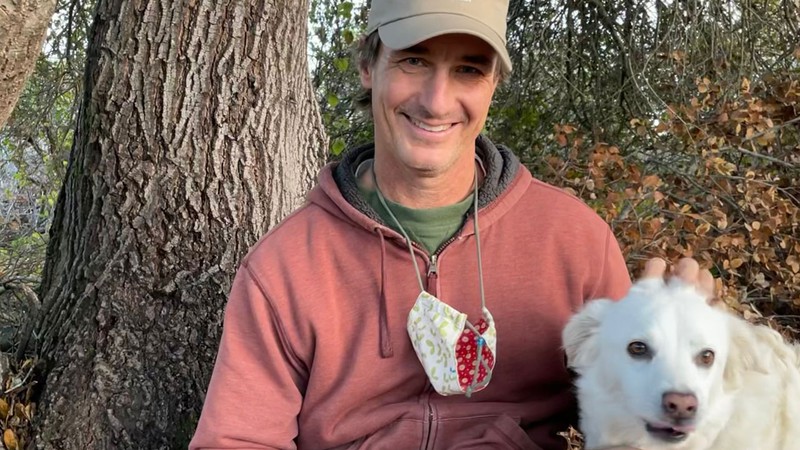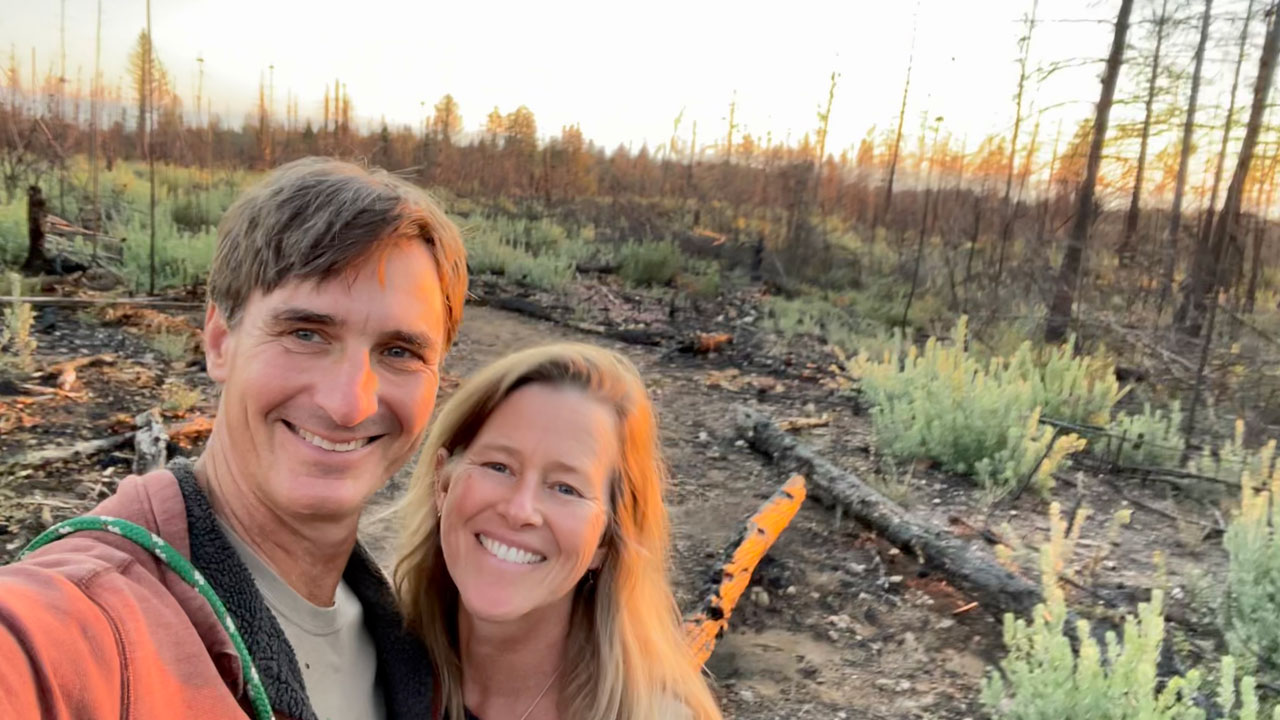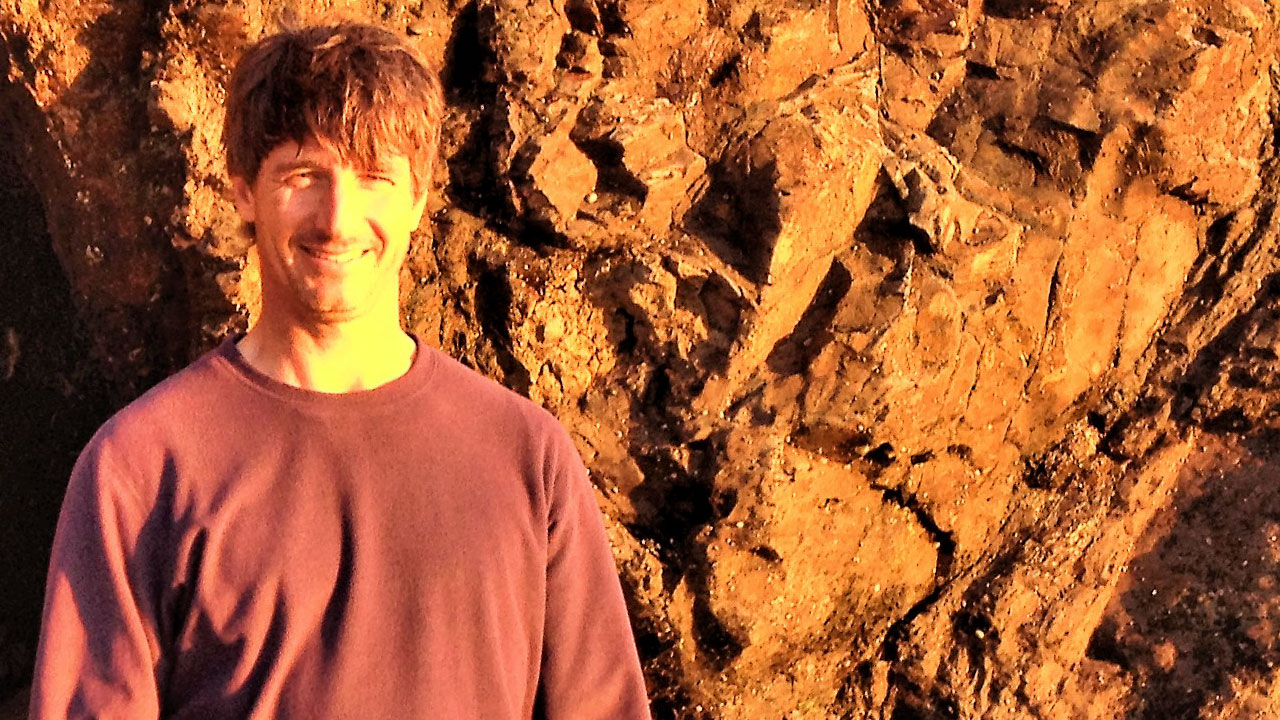The longtime conservation director talks about the highlights of his work with Land Trust of Santa Cruz County.

Conservation director Bryan Largay helps the Land Trust of Santa Cruz County choose its priorities. Land Trust of Santa Cruz County
By NAOMI FRIEDLAND
Bryan Largay, Land Trust of Santa Cruz County’s conservation director, has overseen land stewardship for the organization since 2012 and has worked in conservation science for 25 years, largely in the Monterey Bay region. I interviewed Largay about the highlights of his work, about serving the environmental community, and about some of the issues he sees in maintaining California’s parks. The interview has been edited for length and clarity.
When did you first become interested in conservation?
I spent much of my childhood stomping around in the woods and swamps, lifting up rocks to see what was underneath. So I think I’ve always had a strong sense of comfort and fascination with the natural world. And I think that much of my experience professionally and in school was trying to find pathways to contribute professionally to conservation. So I guess it’s always been in my heart. But in terms of being able to spend a couple thousand hours a year working on it—that was more of a deliberate effort after college.
What prompted you to live and work in the Monterey Bay region, and what do you admire about the natural landscape of the Central Coast?
I ended up here on a random road trip. After college I drove out here with friends from the East Coast to race sailboats. I was on the intercollegiate All-American team and had done a lot of competitive sailboat racing, and there was a world championship event out here. I could not have told the difference between Santa Cruz or Santa Ynez or Santa Monica or any other California town until I got here. Once I did get here, I was absolutely blown away by the redwoods at Henry Cowell, by the spectacular ocean and bird life, the clouds of shearwaters off the coast, the elephant seals at Año Nuevo and the otters at Elkhorn Slough—all of that just blew my mind. I was really fortunate to make a home here.
Can you tell me more about your role as the Land Trust of Santa Cruz’s conservation director?
My primary responsibility is to operate at a strategic level developing conservation priorities for the organization. The way that manifests is there are lots of irreplaceable natural assets in our environment. There are lots of threats to them and there’s a toolkit that a land trust has related to real estate and land management. My job is to help the organization choose from all of the different priorities we might have in a given amount of time with our limited resources.
Can you describe the toolkit you’re talking about?
Sure. A land trust is a nonprofit organization and is equipped with the capacity to do real estate transactions. And that means we can buy and own land or we can buy and own rights on land. The most common example of that is called a conservation easement. And a conservation easement might strip the development rights for a piece of property, or it might grant the right to build a trail or to do habitat enhancement. But it leaves the ownership of the land in the traditional sense to someone else, to the current owner or whoever they sell it to. And so this toolkit of buying land or buying easements on land makes us a little bit different than a lot of other nonprofits that might advocate for policy or educate members of the community in how to take care of the environment.
What are some of your favorite projects that you’ve worked on?

I am a huge fan of tiny natural wonders like wildflowers and butterflies and salamanders. Great examples of properties that have those include the Glenwood Preserve, which is in Scotts Valley—spectacular wildlife and wildflower displays and some really interesting endangered insects that live there. I’m a big fan of our Sandhills properties, which also have a lot of rare flowers and unusual wildlife.
I also have done a lot of work over the years on sustainability in working lands. About a quarter of Earth’s land surface—perhaps half of Earth’s land surface depending on how you add it up—is managed for producing food, fiber and building materials. And so how we do that has a vast footprint on planet Earth. One of the things I’m proudest about and most excited about in Santa Cruz County is how astonishingly innovative we are as a community about sustainability and working lands. Santa Cruz is a birthplace of organic agriculture. The Land Trust owns organic farmland, and figuring out how to have sustainable wildlife-friendly farming that also produces food that’s abundant, safe, and affordable is a challenge. There’s a lot of work to do there.
Santa Cruz is on the leading edge of sustainability in the production of wood materials. Logging redwoods is simultaneously something that is astonishingly intimidating to a lot of environmentalists and yet amazingly sustainable, because these trees will sprout whole new trees from their roots. Being self-sustainable from a timber perspective is an interesting opportunity we have here. That is, at any rate, with hundreds of millions of acres of the earth being logged, how can we take the lessons learned here and transfer them to other places? Those are interesting questions.
Do you ever work with other counties in California or other places to try to showcase what you are doing here?
We do that in a couple different ways. We often partner with researchers at UC Santa Cruz or Cal State Monterey Bay or San Jose State and invite them to our properties so they can do the research, crunch the numbers, and then publish the results and transmit information that way.
We are a science-based organization rather than an advocacy organization. So we’re more comfortable with the science speaking for itself rather than trying to convince other people what to do.
What are some projects that you are currently working on that you’re excited about?
One of the coolest ones is that we own a farm in Watsonville. It’s about 500 acres and about half of the property is in organic agriculture, growing kale and strawberries. It’s super cool. The other half, a couple hundred acres, are in natural habitats—a whole lot of freshwater wetlands full of birds. There was a flock of a hundred white pelicans out there yesterday and they are super beautiful.
So we’ve been working on that sustainability piece, vibrant wildlife habitat next to thriving farmland, for about 10 years. Our current project is to open that property to the public with a trail network, wetland boardwalks, learning gardens, and a demonstration free-food forest. You pick vegetables, food patches, orchard trees, and stuff like that.
Are you collaborating with other people or another organization to maintain the place?
Yes, it is a huge lift in terms of operating and maintaining all of that. So we’re partnering with Life Lab, the school garden nonprofit.
We’re partnering with Watsonville Wetlands Watch. We’re partnering with Esperanza Community Farms, with Santa Cruz Community Orchard—a whole bunch of different partners, all of whom are going to be key to successfully running this thing. We have a land management team here, but running all this stuff is going to be very, very labor intensive.
How have discussions and priorities changed throughout your time working in conservation?
I think that probably the biggest change is pivoting from saving the redwood forests and the north coast of Santa Cruz County to focusing on the lands around Watsonville and the Pajaro Valley.
I think something like 50 percent of the land north of the city of Santa Cruz is already in conservation. It’s one of the most protected landscapes in California. And yet, Watsonville is park-poor by many measures. And so making sure that people who live just 15 minutes away from here have the same access to the outdoors and the same protected watersheds and protected coastline that we in Santa Cruz have is important.
Why do you think that is the case, that there’s more preservation of lands in the northern part of the county?
I think that the redwood forests are kind of the original conservation story in California. And so I think that it’s not too surprising that that’s where a lot of momentum happened early on.
And the landscapes of southern Santa Cruz County—the hilly landscapes, our grasslands and oak woodlands and things like that—are very beautiful, but not quite as dramatic; it’s a little subtler of a landscape. The north coast is very dramatic with these cliffs and rugged coastline—evocative of Big Sur and stuff like that. It’s not too surprising that that charismatic landscape got protected first.
There’s also issues of wealth; there’s potentially issues of race but I don’t want to presume that I know the cultural history of the region enough to say. For whatever reasons, the reality is that part of the county has been left behind, and there’s a lot of work to be done.
Where do you see conservation heading in Santa Cruz County and in California as a whole?
I think that one of the biggest challenges for conservation statewide is managing lands that are conserved. The challenge is that once these lands are protected, they’re in the public trust, they’re for the public benefit. How are they going to be cared for?
All of our agencies—county parks, state parks, entities responsible for city parks—many of them are struggling. They’re stretched thin, they’re under-resourced, they have trouble retaining staff, and there are enormous costs associated with managing land.
The big question is: How are we going to crack that nut? How are we going to take care of these lands that make this place so special? The state of California has been amazing in supporting the protection of land in the first place, the purchase of land, the improvement of it with trails or habitat restoration, but the state is not interested in funding management for the long term.
So the key for us as a community and then as a state is to sort out how we are going to finance caring for these lands. And then related to that: how are you going to make sure that all members of our communities can enjoy access to the land and even better, help out in stewarding them?
Do you find that it might be hard for people to participate in volunteering?

I think it’s hard for people to realize that getting involved as a volunteer is a big deal. If you think you’re going to make a difference in four hours on a Saturday morning, it’s pretty hard to make a difference in four hours on one Saturday morning. A hundred hours a year might be a start.
Forty or fifty years ago, a lot of people volunteered and helped out at their church, and they probably did it two hours a week every week of their life. I think that’s probably the level of connection you’d need to begin to connect people in a meaningful way with the land and have the land benefit meaningfully from their work.
I’m not trying to replace religion or anything, but the church is a civic institution, and I think there’s a lot of value in that. Community is important. People who love nature have a lot in common already. Maybe there’s an opportunity to create community.
I think people who look at volunteerism find that community is what brings people back. It would be wonderful to make that part of the story where people are really giving a lot of themselves.
There seems to be an issue about having enough funding to support full- time workers.
Yes, it’s all very expensive. The full time worker is expensive. The volunteer coordinator is expensive. At this point, most volunteer coordinators spend more time coordinating volunteers than the volunteers will ever do in work. Which is not good math that in a market economy really sustains itself.
So, hopefully we can get volunteers who are ready to give meaningfully week after week after week. And then you can create community, and then you can have people who really make a difference. At the same time, I’m sympathetic. Everyone’s busy and most people work really hard and when they finally have some free time, they’ve got people to see and decompression to do. Working on your weekend—that’s a big ask.